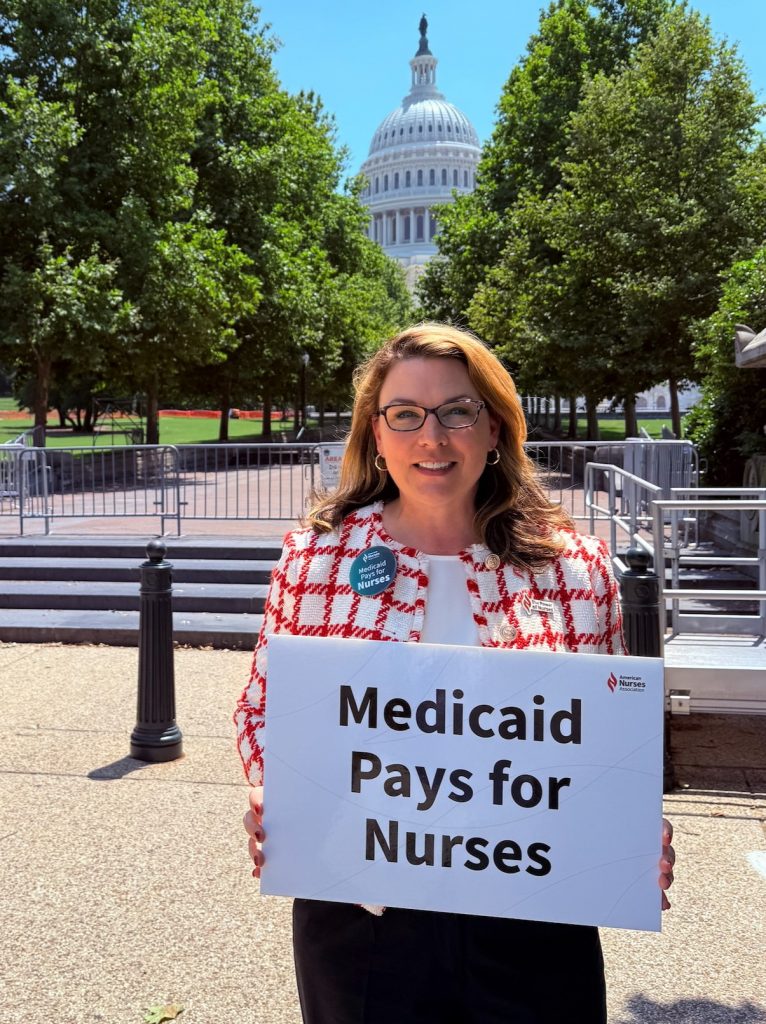America continues to face a geographic nursing workforce shortage, particularly in rural and medically underserved communities.
Inadequate staffing tends to have an adverse, ripple effect on the nursing workforce and the ability of healthcare facilities to provide timely, high-quality healthcare services. One solution to this staffing crisis is for policymakers to continue to invest in nursing education by supporting the Title VIII Nursing Workforce Development Programs.
There will be about 194,500 openings for registered nurses (RNs) annually through 2033 due to nurse retirements and other workforce exits.
U.S. Bureau of Labor Statistics
What are the Title VIII Nursing Workforce Development Programs?
The Title VIII Nursing Workforce Development Programs represent the only dedicated federal programs addressing all aspects of nursing workforce development, including education, practice, and retention. These programs are administered by the Health Resources and Services Administration within the U.S. Department of Health and Human Services. Here is an overview of the Title VIII Programs:
- ADVANCED NURSING EDUCATION PROGRAM – The Advanced Nursing Education Program helps support advanced practice registered nursing (APRN) students so they may practice in rural and underserved settings. This program also focuses on increasing nurses in primary care through traineeships opportunities.
- NURSING WORKFORCE DIVERSITY PROGRAM – The Nursing Workforce Diversity Program increases nursing education opportunities for students underrepresented in the profession by supporting career advancement for nurses with diplomas to become baccalaureate prepared registered nurses (RNs) or graduate-prepared advanced practice registered nurses (APRNs).
- NURSE EDUCATION, PRACTICE, QUALITY AND RETENTION PROGRAM – The Nursing Education, Practice, Quality and Retention Program focuses on national nursing needs and strengthens nursing workforce capacity.
- NURSE FACULTY LOAN PROGRAM – The Nurse Faculty Loan Program works to increase the number of qualified nurse educators by awarding funds to institutions that provide student loans to graduate students willing to serve as faculty upon graduation.
- NURSE CORPS SCHOLARSHIP AND LOAN REPAYMENT PROGRAMS – The Nurse Corps Scholarship Program awards scholarships to individuals who are enrolled or accepted in a school of nursing, in exchange for service of at least two years in a Critical Shortage Facility (CSF) after graduation. The Nurse Corps Loan Repayment Program assists in the recruitment and retention of RNs and APRNs to work in CSFs or as faculty in nursing schools by providing these nurses with loan repayment benefits.
Importance of Reauthorizing the Title VIII Nursing Programs
The Title VIII Programs were last reauthorized in 2020 as part of the Coronavirus, Aid, Relief, and Economic Security (CARES) Act for a period of five years. Anticipating the need to reauthorize these critical programs, the American Nurses Association (ANA) and its allies in the nursing community worked with a bipartisan group of congressional champions to introduce the Title VIII Nursing Workforce Reauthorization Act (H.R. 3593 / S. 1874). Both bills have garnered bipartisan support on Capitol Hill.
In fact, the House Energy and Commerce Committee held a hearing earlier this year to examine H.R. 3593. Unfortunately, the federal government shutdown slowed down momentum for moving this bill and authorization for the programs expired on October 1st. Without the passage of this bill, the Title VIII Programs are at risk for losing congressional funding and being eliminated altogether. Our team continues to advocate for reauthorization during ongoing conversations with key Leadership and committee staff on both sides of the aisle.
Congressional Funding is Critical to Expand Nursing Workforce
Despite making up the largest sector of the healthcare workforce at over 5 million nurses, congressional support for nursing workforce development currently stands at $305.472 million in discretionary spending under the current continuing resolution which is in effect until January 30, 2026. This amount pales in comparison to the $17.8 billion in mandatory funding that Congress provides to graduate medical education. Unfortunately, the Senate Appropriations Committee approved a healthcare spending bill that would provide $303.472 million for the Title VIII Programs in Fiscal Year 2026. The measure proposes a $2 million haircut to the Nursing Workforce Diversity Program.
Even worse, the House Appropriations Committee took a machete to the Title VIII Programs by proposing to cut these programs by $47 million. Specifically, the bill would eliminate funding for the Nursing Workforce Diversity Program and the Nurse Faculty Loan Program. The adoption of the House bill would make it harder for our nation to attract talented nurse faculty to educate the next generation of nurses. It would also make it more difficult for our nation to attract a nursing workforce that meets the needs of all Americans. Consequently, ANA and its nursing allies are now requesting that Congress provide at least $303.472 million for the Title VIII Programs in FY 2026 by adopting the Senate’s healthcare spending bill.
How You Can Help Protect Nursing Education
There are plenty of ways that nursing advocates can help ANA protect the Title VIII Programs and nursing education. The easiest way is to reach out to your members of Congress to ask for their support for reauthorization and funding for these vital programs by visiting RNAction.org. Nursing advocates can also schedule meetings with their lawmakers and their staff in their district offices during constituent work periods. Visit ANA’s In-District webpage that share tips for scheduling and executing these meetings. Finally, ANA members can join the Nurses Action Society if they would like to leverage their existing relationships with federal lawmakers or would like to develop relationships with lawmakers on Capitol Hill.

